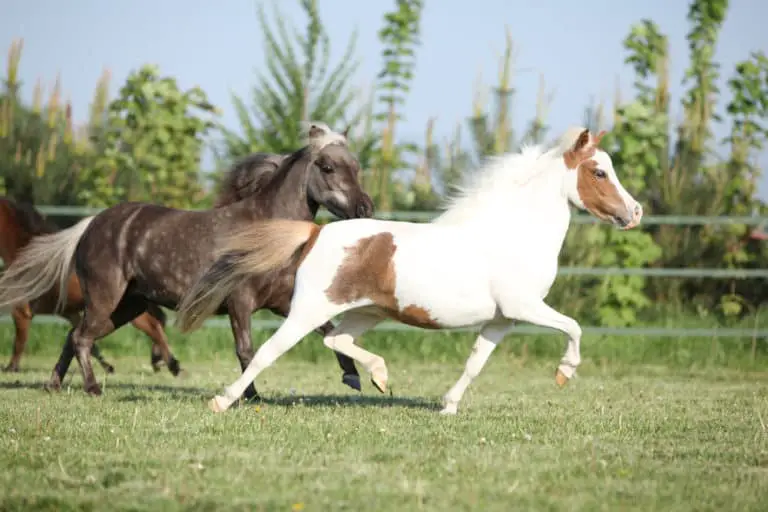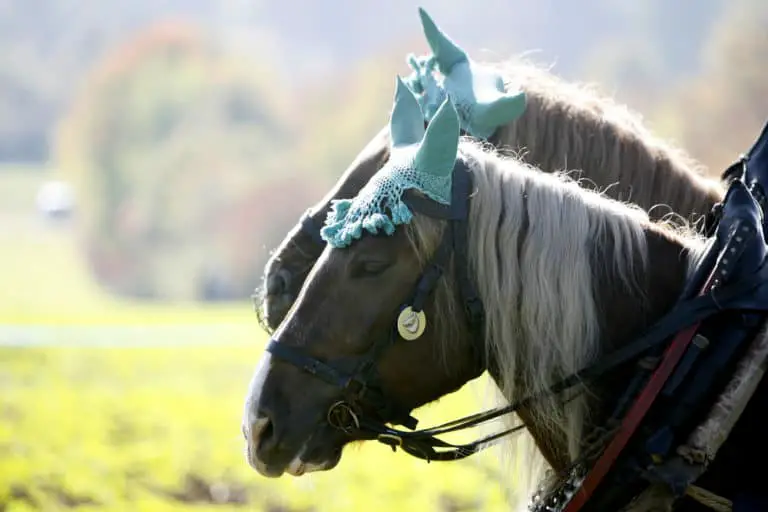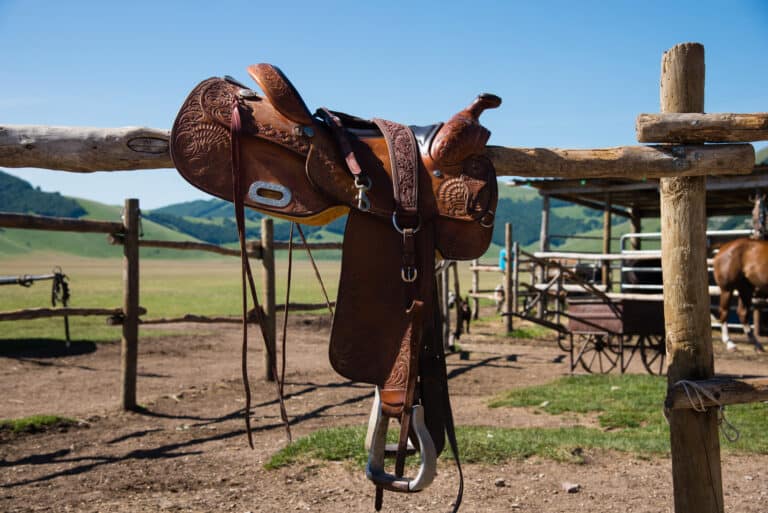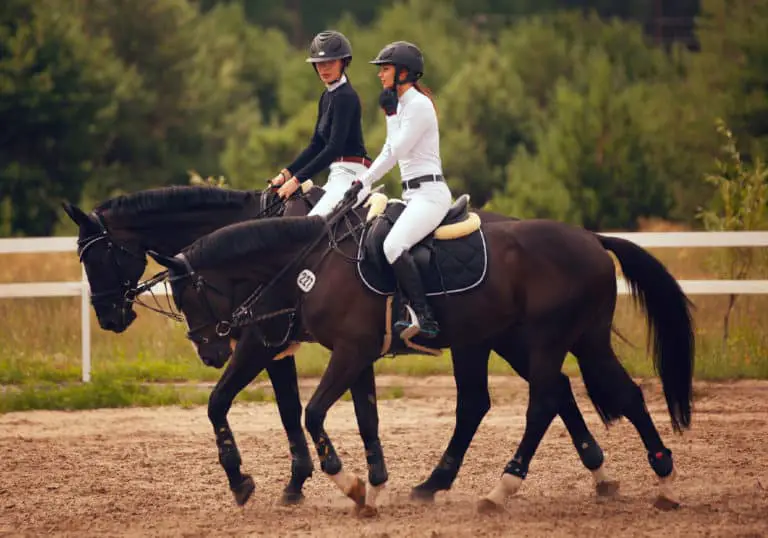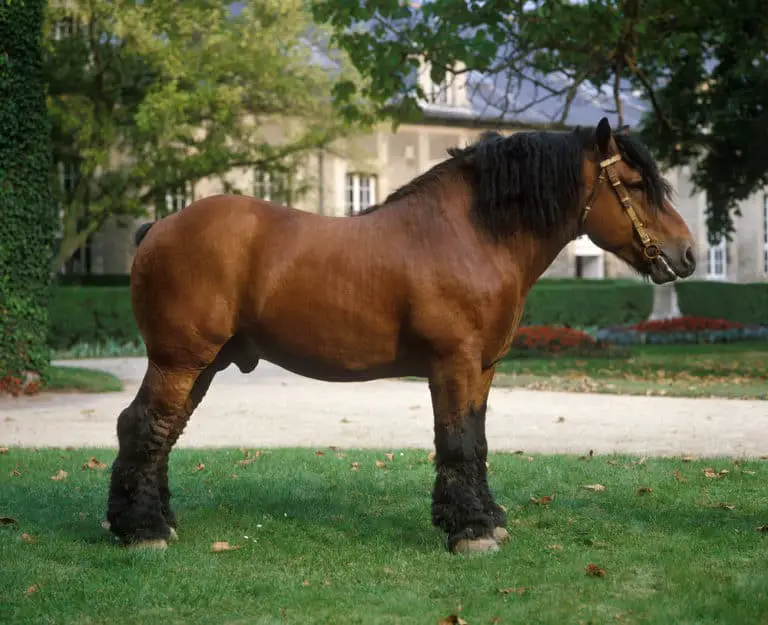Akhal Teke Horse: Care, Cost & History (2024)
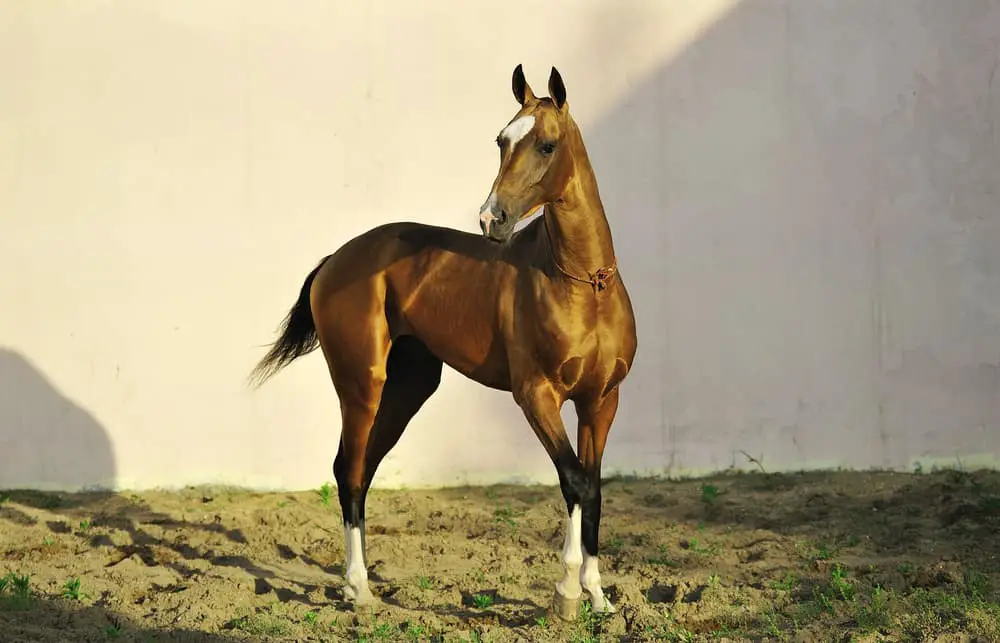
The Akhal Teke horse is known as the heavenly horse because of the golden coat sheen. The breed developed in Turkmenistan, a central Asian country, over 3,000 years ago.
They are known for their speed, endurance, intelligence, and devotion to their riders. The horses are an emblem of the country and appear on banknotes and stamps.
Breed: Akhal Teke horse
Adult Weight: 950-1,100 pounds
Adult Height: 14.3-16 hands (59-64 inches)
Origin: Turkmenistan
Use: Sport horses, racing, endurance
Colors: Bay, dun, black, chestnut
Features: Metallic sheen to the coat color; duns appear golden
Lifespan: 20 years
Character: Highly intelligent and bonded to people, incredible endurance and energy
Gait: Spirited, athletic, and agile
Best for: Intermediate and experienced riders
- Characteristics
- Akhal Teke Care
- Akhal Teke History
- Modern Akhal Tekes
- Cost and Ownership
- Buying an Akhal Teke
- Similar Breeds
Akhal Teke Horse Characteristics
The Akhal Teke horse characteristics are exotic and elegant in appearance. One of the most distinctive features is the long, narrow Akhal Teke horse head, with almond-shaped eyes, long, slim ears, and large nostrils. Many have blue eyes. Their forelock, mane, and tail have minimal amounts of hair, and the hooves are small and dainty.
Size
The Akhal Teke horse height is 14.3 to 16 hands, or 59 to 64 inches, according to the Akhal-Teke Association of America. (1) Among horse breeds, Akhal Teke size is considered medium-sized, and the registry is strict about horses maintaining the breed standard.
Foals are born a proportional size to their mother and are about 60% of their full height at birth. They mature to their full height around age five.
Their body type is often compared to a cheetah or a greyhound, with a sleek and muscular appearance. The body is long in general – a long neck, back, and legs. This long, slim build, and especially the upright neck, can make Akhal Teke horses appear taller.
Weight
The Akhal Teke horse weight is between 950 and 1,100 pounds. Much of this weight is in their dense bone structure and the muscles that ripple throughout their bodies. Males tend to weigh slightly more than females, and non-adult weight is proportionate to their height.
The bones developed with a denser structure than other breeds in the harsh desert climate and can withstand constant pounding over long distances. The leg bones, in particular, are very strong and dense. The bones still have an elegant structure because of their length.
The Turkmenistan horse has minimal fat on its body and is mostly muscle. This is due in part to the diet of their desert heritage.
Colors
The most common Akhal Teke horse colors are bay, dun, black, chestnut, gray, cream, and palomino. Rare Akhal Teke horse colors include buckskin, cremello, and perlino. The cremello comes from the palomino base while the perlino has a bay base. They can have white markings.
A significant feature of the beautiful Akhal Teke horse is the metallic sheen of their coats, differentiating their colors from other breeds. The metallic sheen is seen in most colors. Many people know the breed solely because of this characteristic.
In the dun horses, the metallic sheen makes them appear golden, and they are referred to as the golden horse breed. It was once thought that this characteristic provided camouflage in the desert.
Temperament
The Akhal Teke horse temperament is known as fiery, spirited, and highly intelligent. In Ancient times, the Teke people kept their horses tethered outside their tents. The horses developed a strong devotion to their people, and Akhal Teke horse behavior is often compared to dogs.
As such, they are also known as “one-person horses” – meaning that each horse bonds closely with one person and doesn’t perform well for others. Horses trained with sensitivity to their spirited nature excel in many disciplines, especially sport and racing.
The breed uses the general rules of the United States Equestrian Federation and these state that children cannot exhibit stallions in competition. (2)
Akhal Teke Horse Care
The Akhal Teke is a hardy breed that can survive on minimal care, with little food or water. This dates back to their development in the desert regions of central Asia. The Akhal Teke horse lifespan is shorter, at only 20 years, perhaps also partly due to this tougher lifestyle, they’re accustomed to.
Diet and Nutrition
The original Akhal Teke diet included a small amount of grain and mutton fat that helped develop their muscular bodies. The grass was available only a few months of the year.
They were fed minimal amounts of food and water because that’s all that was available. Once hay became available, they still weren’t fed much of it. (3)
Today, the breed still thrives with a basic diet and eats less than horses of comparable size. There isn’t a lot of bulk to the diet, so minimal grass and hay. But, they do require a high protein diet to maintain their athletic ability and stamina. They are often still fed a mixture of butter and eggs with barley. (4)
Health Problems
The gold horse is golden in more than one sense – they are very hardy with few health problems. It’s important to maintain their diet and nutrition to avoid creating health problems through a diet their body isn’t used to digesting.
There are some genetic problems in the breed though. Horses can suffer from cryptorchidism, degenerative suspensory ligament desmitis, and Wobbler Syndrome. (3)
Unfortunately, the Akhal Teke foal is affected by Naked Foal syndrome. This is a hereditary issue where the foals are born without any hair at all. Foals with this syndrome don’t live for long and suffer while they’re alive. Genetic testing can help prevent breeding horses that carry the gene. (5)
Grooming
Grooming the golden horse – or any member of the breed, needs to be done with care. The breed has shorter hair than other horses. This is one of the reasons that they have a metallic sheen, the short hair has a unique structure, and the light reflects through it. (6)
Akhal Teke grooming should be done daily because they have fine hair. Daily grooming keeps their coat healthy and prevents unnecessary hair loss. It’s also an ideal way to bond with a horse and provide enrichment. The breed has tough hooves that are strong and healthy. But, they still need to be cleaned daily to prevent any issues and maintain their health. (7)
Akhal Teke Horse History
The Akhal Teke horse history is 3,000 years old, even older than the Arabian horse. They’re the closest descendant of the Scythian horse, one of the earliest domesticated and ridden. The Akhal Teke developed in central Asia, now called Turkmenistan, along the Russian border. This area includes the KaraKum desert, which shaped the breed’s characteristics.
Origin
Turkmenistan borders Iran and Afghanistan, as well as Russia. The Tekemene people started breeding their horses for their nomadic lifestyle and raids against other tribes more than 3,000 years ago.
The horses developed a reputation for their fiery personalities, brilliance in war scenarios, and speed in horse races.
The area where the Teke people lived is relatively isolated by the Caspian Sea on one side and mountains and desert on two other sides. Akhal Teke horse origin remained unchanged by outside bloodlines.
The name Akhal Teke was first used in the 1800s. Prior to that, the horses were referred to by many names, including Turkmene, Persian, Massaget, Nisean, and Parthian.
Historic Development
The modern version of the Akhal Teke horse can be traced to the 8th century. Horse pedigrees were passed down orally through families.
Russians first acquired Akhal Teke horses 500 years ago and have been closely tied to the breed’s history since then. Horses were kept in the royal stables and coveted by all. They annexed Turkmenistan in 1880 and established a stud farm, collecting all the best horses.
Boinou was born in 1885 and one of the stallions collected and used at the farm, and the most popular Akhal Teke bloodlines trace back to him. Use by the Russian military, crossbreeding, war, and other stressors significantly decreased the Akhal Teke population.
Notable Akhal Teke Horses
There are many famous Akhal Teke horses throughout history, as can be expected when they were known and loved by Alexander the Great and Marco Polo. Notable champions of modern times are making the breed a household name, specifically in sport horse arenas, and are ambassadors for the Akhal Teke horse pedigree.
Absent
Absent was a black Russian Akhal Teke stallion who won Olympic gold in dressage at the 1960 Olympics in Rome when he was eight years old. He collected an amazing record of six Olympic medals over his lifetime, the most of any horse. He sired over 70 foals before his death in 1975, including talented dressage and jumping horses.
Senetir
Senetir was the first Akhal Teke stallion imported to the United States. Margot and Phil Chase of Virginia imported him to Virginia in 1978, they’re longtime stewards of the Akhal Teke horse breed in the country. He sired many foals to help establish the breed in the U.S. before his death in 1999.
Kandar
Kandar is a son of Senetir and was the mount of Karen Yates. The major accomplishments of this Akhal Teke gelding include being the 1998 United States Equestrian Federation Horse of the Year and the Intermediate Level Zone Champion in Three-Day Eventing that year. He was also on the long list for the 2000 Olympic Games in Sydney, Australia.
Myths and Legends
The history of the breed is filled with Akhal Teke horse legends and while many are from ancient times, their modern history includes just as many legends. They chronicle the endurance and stamina of the breed, their unique coat color, and uncover information about their gaits that wasn’t previously known, despite the breed’s long history.
2,500-Mile Journey
In 1935, the Turkmene people decided to raise awareness about their horses. They rode a group of stallions for 2,500 miles in 84-days, from the Turkmenistan capital to Moscow, Russia. This included 225-miles across the Karakum desert. The horses crossed the desert in three days despite the limited water available. Another group completed this ride in 1988.
Melekush’s Golden Sheen
Queen Elizabeth of England has been gifted many horses because of her equestrian interests. Nikita Khrushchev of the Soviet Union gave her Melekush, a golden dun stallion, in 1956. However, her grooms were unfamiliar with the Akhal Teke breed and kept trying to clean the dust off him until they realized he was a real golden horse.
Unique Trot
The trot of the Akhal Teke horse is not a two-beat diagonal gait. This unique characteristic was discovered by Phil Chase of Virginia, the first to import the breed to the United States. He and his wife had research conducted; it was proven that each hoof strikes the ground individually, creating an efficient, gaited horse and a smoother ride.
Modern Akhal Teke Horses
The breed survived despite the population threats and Russian interference, thanks to Tatyana Nikolaevna Ryabova. She’s maintained the breed records since 1973 and upheld breed standards. Types of Akhal Teke horses today trace their lines back to the stallions Boinou (five lines), Chopar Kel (three lines), Sultan Guli (one line), and Niderbai (one line).
Breeding
Akhal Teke breeding still centers in Turkmenistan and Russia, with smaller populations in Europe, the United States, Uruguay, and Australia.
Akhal Teke horses breeding has been used to strengthen many other horse breeds. They were used in the development of the Arabian and Thoroughbred to strengthen the Trakhener, and several Russian breeds.
Akhal Teke horses are bred for racing, especially in Turkmenistan where they continue to be a symbol of pride. The endurance characteristics needed for war and horse racing make them popular in sport horse disciplines as well.
The Boinou bloodlines remain the most popular, with 24 sub-lines created from outstanding stallions he sired. Many of the horses found today are from one of these sub-lines.
Population
The Akhal Teke horse population is still small at an estimated 5,000 horses globally, and they are a threatened breed. (6) However, that is a conservative number based on the numbers reported by breed organizations throughout the world. Other organizations put the estimate at closer to 8,000 horses total. (8)
The largest population is found in Turkmenistan where they are a national symbol and the Teke people work to preserve and promote the breed. (9) In the United States, there are 3,428 horses and 97 members in the registry. (10) Russia still maintains several breeding farms and is breeding some of the finest horses, as well as stewarding the breed’s history and standards. (11)
Uses
Turkmenistan people are incredibly proud of their horses and for a good reason. They are using the breed and promoting Akhal Teke horse uses to others as well. One way they did this was in their 1935 and 1988 endurance rides from Turkmenistan to Moscow.
Horses are popular in the sport disciplines because of the high profile success of horses like Absent and Kandar, among others.
Since the breed is threatened, many horses are used for breeding, however more are being seen in sport disciplines like dressage, jumping, endurance riding, and three-day eventing, growing the breed’s popularity.
The Akhal Teke horse gait is smooth because of their distinct footfall pattern and this makes them an incredibly comfortable horse to ride.
Akhal Teke Horse Prices
Horse ownership dreams usually center around finding the perfect horse and then living the dream with that horse. The Akhal Teke horse price is higher than other breeds because they are rare. Then, there are the additional costs of keeping that dream going day after day, year after year with board, feed, and veterinary care, among other costs.
Purchase Price
The purchase price is the initial cost of owning a horse. The average price of Akhal Teke horse is between $5,000 and $35,000, depending on the horse. (12) Different factors influence the price.
Horse age and bloodlines are two primary price influencers. Horses with rare bloodlines, for example, from lines other than Boinou, will cost more.
Alternatively, horses with Boinou bloodlines that have excelled in sport disciplines, for example, Absent, who traces to Boinou on the sire and dam lines, will cost more.
The amount of Akhal Teke horse training can also influence the price; trained horses cost more. Racehorses cost more because there is an anticipated return on investment. Foals and young horses generally have lower average prices.
Ownership Costs
The rest of the Akhal Teke price is realized when you purchase the horse and the dream becomes a reality. Akhal Teke horse cost of ownership is between $1,770 and $12,930 annually for their board, feed, veterinary and hoof care. These are essential costs for the horse’s safety and wellbeing and cannot be avoided.
Board
Board is horse housing and the biggest expense each year. It’s a shelter for the horse, a barn or run-in shed, as well as a pasture or turnout area for the horse to run around and get exercise. Costs vary depending on the amenities selected. Akhal Teke horse board cost is $1,200 to $7,200 each year. (13)
Feed
Feed is the diet and nutrition that a horse needs to not only survive but thrive. The Akhal Teke breed has lower feed costs than other breeds because they evolved to survive on very little. Hay, grass, grain, and nutritional supplements are all feed expenses. The Akhal Teke horse feed cost is anywhere from $250 to $4,380 annually. (13)
Veterinary Care
Akhal Teke horse veterinary cost is $250 to $350 annually. This only covers basic veterinary care – vaccinations, dewormer, and dental work. These are all necessary preventative measures that are imperative to horse health. Any injuries or illness could cost an extra $500 to $1,000 and again, are unavoidable costs. (13)
Hoof Care
The small, strong hooves of the Akhal Teke breed require trimming and care by a farrier every six to eight weeks to maintain their health and strength. Not all horses require shoes, but those that do will have more annual expenses. Akhal Teke horse hoof care cost is between $120 and $1,000 each year.
Buying an Akhal Teke Horse
Making a dream come true is thrilling, and the Akhal Teke breed, our Celestial horse, is definitely a dream worth chasing. Horses have distinct personalities though, and it’s important to understand what you’re buying before you make the purchase. A little preparation goes a long way to making sure the dream has a happy ending.
Is the Akhal Teke Horse Right for You?
Owning an Akhal Teke is not for everyone. The breed isn’t recommended for beginners because they are fiery and spirited and highly intelligent. Their sensitive nature means that it’s easy to create an environment where they feel mistreated or threatened.
Intermediate and experienced riders excel with Akhal Teke horses because they use sensitive training methods and are actively riding their horses multiple times per week. These horses also do best when they have a job and a focus on their work, whether competition or something else.
Riding an Akhal Teke horse becomes an exercise in mutual understanding, as the horse’s keen intelligence allows them to intuit what the rider wants to do before the actual direction is given.
How to Buy an Akhal Teke Horse?
Buying a rare breed is challenging but not impossible. If your dream is owning an Akhal Teke horse, you’ll want to start by outlining your goals of horse ownership, and what you want to do with your horse.
Identify an Akhal Teke breeder, and contact them for more information about the breed. They can help you understand which lines are best for your goals, and find horses for sale, either with them, or other breeders and owners.
Buying an Akhal Teke horse is a process and it may take awhile to find the right horse, be patient. A pre-purchase veterinary examination can also rule out any genetic problems the breed has before you buy the horse.
Similar Breeds to Akhal Teke
If the search for the ideal horse is challenging, there are Akhal Teke breed alternatives that can fulfill your dream. Arabians and Thoroughbreds are both hot-blooded breeds with similar characteristics that were influenced by the Akhal Teke. The Trakehner is a warmblood breed that infused Akhal Teke bloodlines to strengthen the breed, and are known for their dressage prowess.
Arabian
The Arabian horse is another ancient horse breed that developed on the Arab peninsula. They are also known for their fiery temperament, speed and endurance. Arabian horses are one of the most popular breeds in the world, and are also highly intelligent and willing to work. Arabians have a distinct and beautiful appearance that makes them easily recognizable.
Thoroughbred
Thoroughbred horses are giants among horse breeds because of their dominance in the sport of horse racing. They have an interconnected history with the Akhal Teke breed; one of the three founding Thoroughbred sires was thought to be an Akhal Teke. Their bloodlines were also used in modern Akhal Teke breeding when the breed was endangered.
Trakehner
The Trakehner breed developed in East Prussia, an area that Russia annexed at the start of World War II. The Trakehner stud farm was in an annexed town, and Akhal Teke bloodlines were used here to strengthen the breed. Trakehners are popular sport horses, especially in dressage, and can also be found in show jumping, eventing, and other disciplines.
FAQ
What is an Akhal Teke horse?
The Akhal Teke horse is one of the oldest breeds, developed in Turkmenistan, and known for its golden sheen, stamina, and endurance.
What does an Akhal Teke horse look like?
The Akhal Teke horse is a normal height but has an exotic look that includes almond-shaped eyes, a long, straight neck, and tiny hooves.
How did the Akhal Teke horse get its name?
The Akhal Teke horse name comes from its birthplace. Akhal means pure in the Turkmen language and Teke is the name of the people.
Can you ride an Akhal Teke horse?
Yes, you can ride an Akhal Teke horse. The breed developed as riding horses and are known for being fast and hardy.
Are Akhal Teke horses good for beginners?
Akhal Teke horses are not good for beginners, they are spirited and very intelligent. The breed is better for intermediate and experienced riders.
How tall is an Akhal Teke horse?
The average height of an Akhal Teke horse is 14.3 to 16 hands, or 59 to 64 inches.
How much does an Akhal Teke horse weigh?
Akhal Teke horses weigh between 950 and 1,100 pounds.
How big is an Akhal Teke horse?
Akhal Teke horses are an average size among horse breeds, however they look larger because of their long, straight necks and slim bodies.
How much does an Akhal Teke horse cost?
An Akhal Teke horse costs between $5,000 and $35,000 in the United States because they are a rare breed.
How much does an Akhal Teke horse ownership cost?
Akhal Teke horse ownership costs between $1,770 and $12,930 annually.
How long do Akhal Teke horses live?
The average Akhal Teke horse lives for 20 years.
How fast can an Akhal Teke horse run?
The Akhal Teke is one of the fastest horse breeds, they can run between 30 and 35 miles per hour.
How much can an Akhal Teke horse pull?
An Akhal Teke can pull between 1,425 and 1,650 pounds.
How much can an Akhal Teke horse carry?
Akhal Teke horses can carry 190 to 220 pounds.
At what age is an Akhal Teke horse full grown?
An Akhal Teke horse is full grown between the ages of five and seven.
What are Akhal Teke horses used for?
Akhal Teke horses are used for riding, specifically sport disciplines like dressage and jumping, as well as endurance. They are also racehorses.
References
- Akhal-Teke Association of America. 2022. Breed Standard. Link
- United States Equestrian Federation. 2022. Licensed Competitions. Link
- Fédération Équestre Internationale. 2019. Discover the Exotic Akhal-Teke. Link
- Breeds of Livestock, Department of Animal Science, Oklahoma State University. 2022. Breeds of Livestock – Akhal Teke Horse. Link
- Akhal-Teke Association of America. 2022. Naked Foal Syndrome. Link
- The Livestock Conservancy. 2022. AKHAL-TEKE. Link
- Richard, Dawn M., Malinowski, Karyn. 1988. Grooming Horses Safely. Link
- International Association of Akhal-Teke Breeding (MAAK). 2022. Akhal-Teke studbook. Link
- Ahal-Teke. 2022. News. Link
- Akhal-Teke Association of America. 2022. Registry. Link
- International Museum of The Horse. 2022. Akhal-Teke. Link
- Akhal-Teke Association of America. 2018. Weg Sale Horse Book. Link
- Arabian Horse Association. 2022. What is the Cost of Providing for Them? Link


